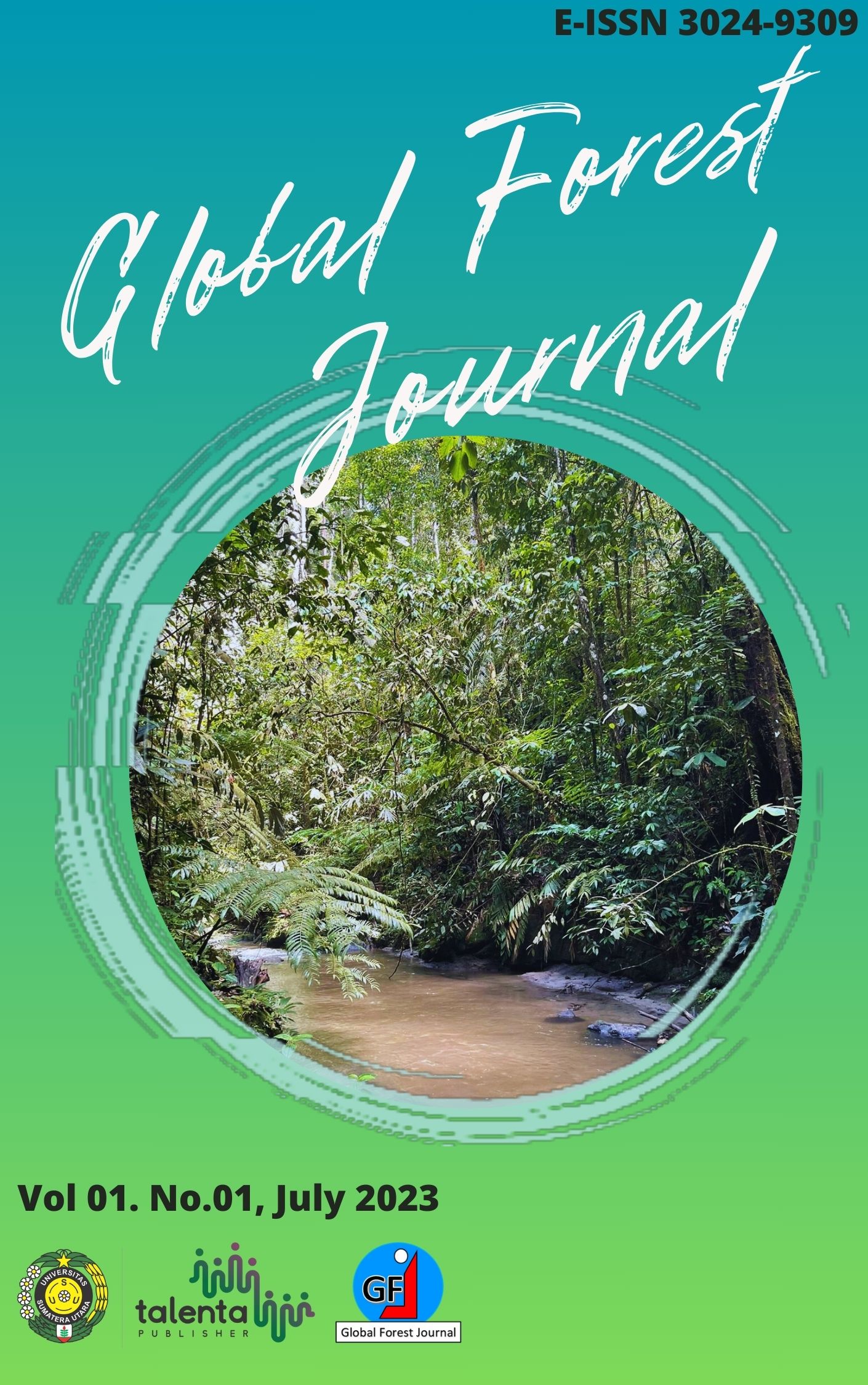Isolation and identification of cellulolytic fungi under Swietenia macrophylla, Mimusops elengi, and Polyalthia longifolia stands at the Universitas Sumatera Utara campus, Indonesia
DOI:
https://doi.org/10.32734/gfj.v1i01.13251Keywords:
Mimusops elengi, Polyalthia longifolia, Swietenia macrophyllaAbstract
The Universitas Sumatera Utara has various types of trees scattered in the surrounding environment. Swietenia macrophylla, Mimusops elengi and Polyalthia longifolia are the three most common tree species found on campus. To maximize the potential for utilizing tree species on the Universitas Sumatera Utara campus, several efforts can be made, one of which is by exploring the presence of cellulolytic fungi. Cellulolytic fungi are fungi that are able to hydrolyze cellulose which can produce cellulase enzymes. This study aims to obtain the potential and identify cellulolytic fungi from the soil under Swietenia macrophylla, Mimusops elengi and Polyalthia longifolia stands. Sampling was taken by making 3 plots on each type of stand measuring 20 m x 20 m with a soil depth of 0 – 20 cm. In each plot, 5 sampling points were made. The soil taken from each type is then composed. Isolation of cellulolytic fungi was carried out using Carboxy Methyl Cellulose (CMC) media. The potenstial of cellulolytic fungi is obtain by calculating the cellulolytic index. All isolates obtained were identified morphologically down to the genus level. The result showed that the potency of the cellulolytic fungi ranged from 0.05 to 1.36. The identification results that the isolates included the genus Aspergillus and Trichoderma.
Downloads
Downloads
Published
Issue
Section
License
Copyright (c) 2023 Global Forest Journal

This work is licensed under a Creative Commons Attribution-ShareAlike 4.0 International License.












